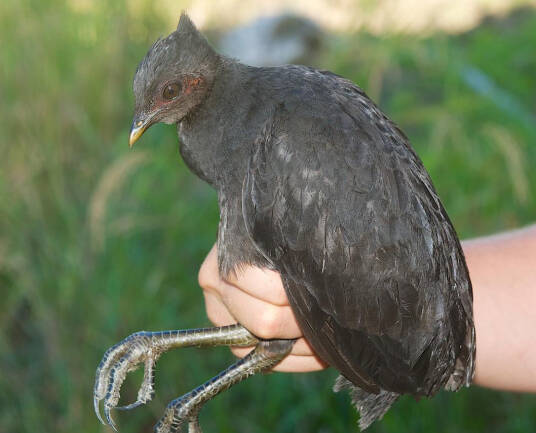Megapodius freycinet
IUCN
LCBasic Information
Scientific classification
- name:Megapodius freycinet
- Scientific Name:Megapodius freycinet,Dusky Scrubfowl
- Outline:Landfowl
- Family:P.Genus P.family P.Genus
Vital signs
- length:About 40 cm
- Weight:525-700g
- lifetime:No textual research information is available
Feature
Distribution and Habitat
It is found in Indonesia and Papua New Guinea.
The natural habitats are subtropical or tropical humid lowland forests and subtropical or tropical humid mountain forests. Foraging along the forest floor,
Appearance
Common megapods are 40 cm long and weigh 525-700 grams. It has a short, broad crest on the head, a black (not yellow) bare face and legs, and has deeper plumage, a shorter tail, and longer legs and feet than other species of the same genus.
Details
The common Megapodius freycinet, also known as Dusky Scrubfowl, is a species of megapod fowl in the family Megapodius.

Common megapods eat mainly plant flowers, seeds, fruits, etc., but also invertebrates (reported to have snails and beetles in their stomachs). The breeding season is February-March on Buru, May on Slan, and October-December in western Papua.
The megapod has created a complete brooding system without having to incubate its own eggs directly. Laying eggs near a very hot volcano or uncooled lava; Some go to the beach to incubate their eggs in the sand piles heated by the sun. The eggs need a proper temperature to hatch, but the sand is hot during the day and cold at night. The megapod makes a sand dune on its nest. When it is hot during the day, the male will spread out the dunes and then bury the eggs in the wet, cold sand. When the temperature drops, she immediately removes the wet sand and covers the eggs with warm, dry sand. Some megapods incubate their eggs using the heat from moldy leaves.
Listed on the International Union for Conservation of Nature (IUCN) 2016 Red List of Threatened Species ver 3.1 - Not Threatened (LC).
Protect wild animals and eliminate wild meat.
Maintaining ecological balance is everyone's responsibility!








